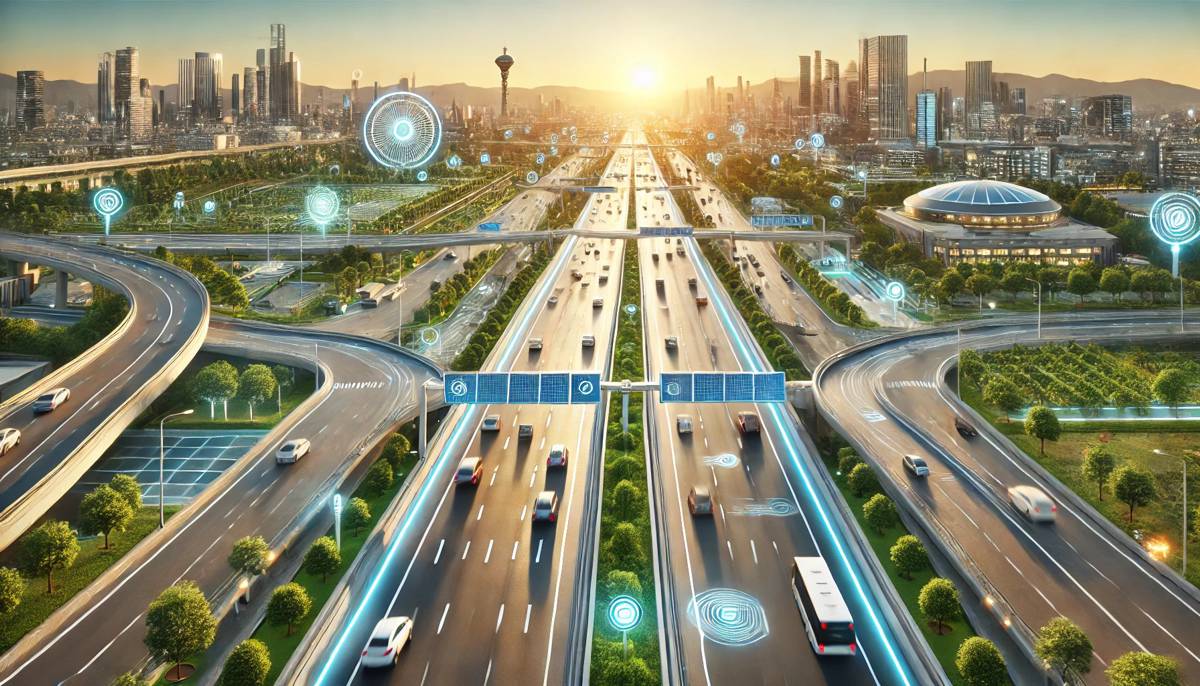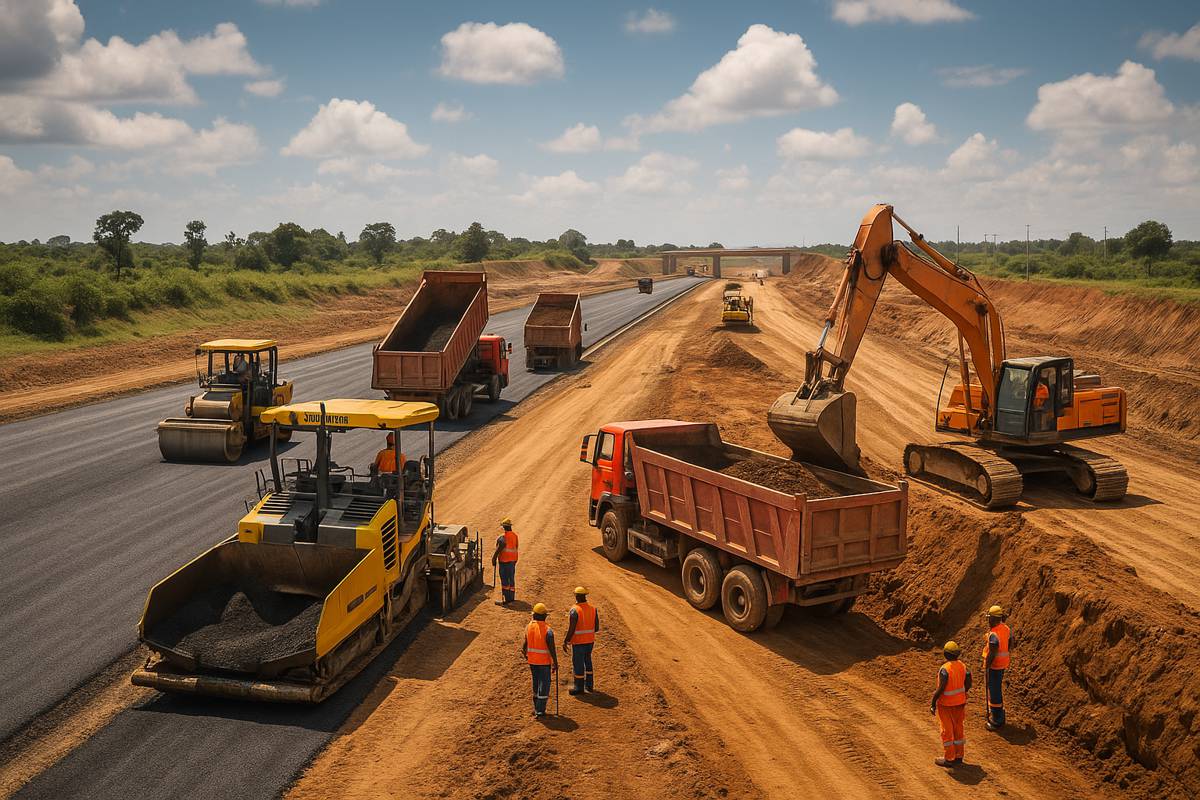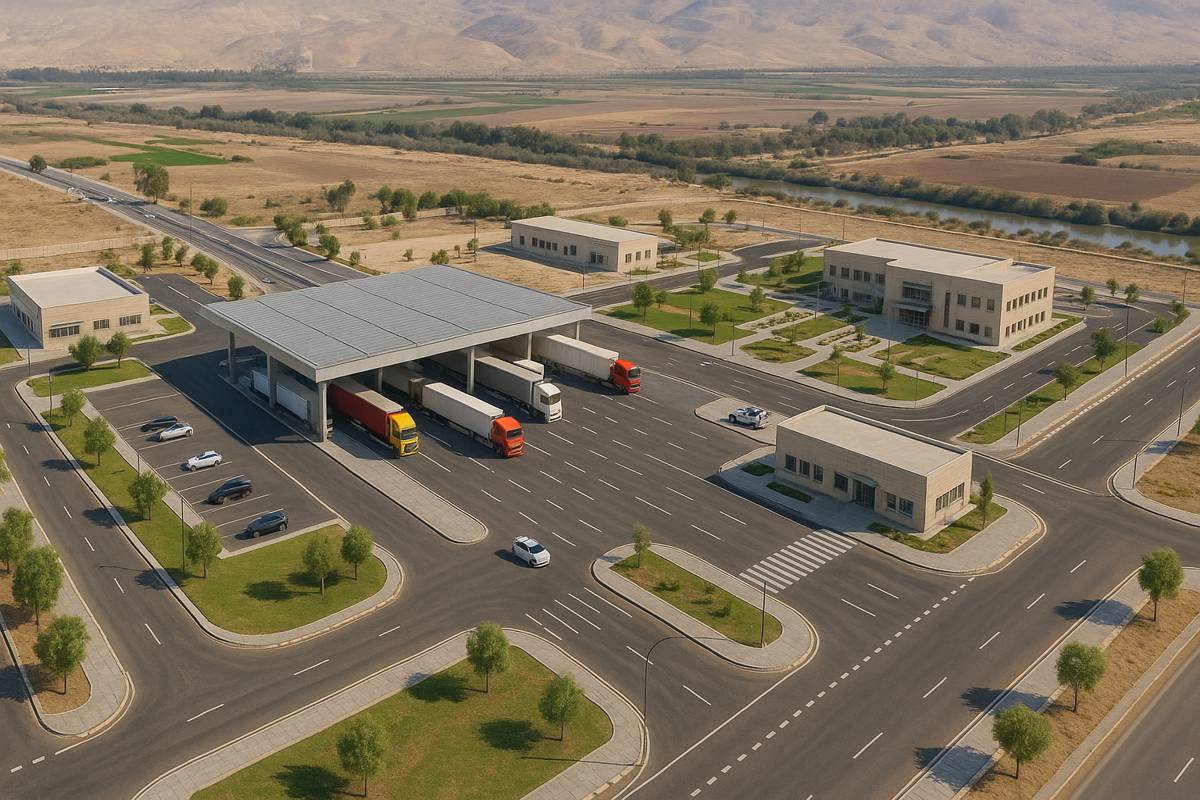Key Challenges in Building the World’s First Fully Smart Highway
The concept of a fully integrated smart highway—a road where advanced technology seamlessly manages traffic, communicates with vehicles, ensures road safety, and even powers itself—has long been the vision of transportation innovators.
Transforming this ambitious concept into reality involves overcoming significant logistical, financial, technological, and regulatory challenges.
In this article, we explore the roadblocks and breakthroughs that are paving the way toward the world’s first fully smart highway and discuss the key elements that will make this vision possible.
The Vision of a Fully Smart Highway
A fully smart highway represents the pinnacle of transportation innovation, where technology, infrastructure, and vehicle systems are integrated into one cohesive network. In this vision, sensors, connected traffic lights, digital road signs, and adaptive lane management systems work in harmony to manage traffic and communicate with both human-driven and autonomous vehicles in real time.
These highways incorporate renewable energy solutions to power infrastructure sustainably and rely on predictive maintenance technologies to stay in optimal condition without frequent repairs.
Financial Investment and Funding Challenges
A fully smart highway requires substantial financial resources. Unlike traditional road construction, which mainly involves labor and materials, a smart highway necessitates investment in cutting-edge technologies like IoT devices, data storage and analytics systems, and reliable renewable energy sources. For example, equipping a highway with Vehicle-to-Infrastructure (V2I) and Vehicle-to-Everything (V2X) communication capabilities involves installing hundreds of sensors, cameras, and connectivity devices, all of which need regular maintenance and upgrades.
Securing funding for these innovations often requires a combination of government support, private sector investment, and, in some cases, public-private partnerships. Programs like the European Union’s Horizon 2020 have allocated funding for smart transportation projects, but the question of long-term funding remains critical. Without sustained financial support, the maintenance and scalability of smart highways could be compromised, leading to underfunded projects that fall short of their potential.
Technology Integration and Compatibility
One of the most complex challenges in developing a fully smart highway is achieving seamless technology integration. Smart highways rely on multiple, interdependent systems working together—ranging from real-time traffic management to autonomous vehicle communication. These technologies must be compatible, interoperable, and able to exchange data without delay.
Achieving full interoperability requires standardized protocols across different devices and systems. For instance, all vehicles on the highway—whether autonomous or driven by humans—need to interact with the same V2X communication infrastructure to ensure synchronized responses to traffic conditions. Initiatives like the 5G Automotive Association have been working on creating standard protocols for V2X communication, but global adoption and implementation remain challenges.
In addition, many smart highway technologies rely on edge computing to process data close to the source, such as within sensors embedded along the road. This requires devices with high computing power and low latency to ensure real-time decision-making. Integrating these with cloud-based systems for broader analysis is essential for comprehensive traffic management, but synchronizing these different computational platforms poses both technical and logistical challenges.
Cybersecurity: Protecting a Connected Highway
With connectivity comes the risk of cyberattacks, and a fully smart highway—brimming with IoT devices, sensors, and communication systems—is a tempting target. Cybersecurity is a major concern because any vulnerabilities in the network could disrupt traffic, disable safety systems, or even cause accidents. Safeguarding a smart highway involves implementing secure encryption, firewalls, multi-factor authentication, and constant monitoring for breaches.
In addition, regular software updates are necessary to address vulnerabilities and keep up with the evolving cyber threat landscape. However, managing updates across a large network of devices—some embedded in the road or mounted on poles—poses logistical challenges. The U.S. Department of Transportation and similar agencies globally are working to develop frameworks for cybersecurity in transportation infrastructure, but the rapid advancement of cyber threats makes this an ongoing and complex task.
Sustainability and Energy Requirements
A key feature of a smart highway is its ability to operate sustainably. This requires energy sources that can meet the power demands of sensors, cameras, digital signage, and V2X communication systems without relying on non-renewable energy. One solution is the integration of solar panels directly into the road surface or in roadside installations, which can power elements like lighting, traffic signals, and charging stations for electric vehicles (EVs).
Additionally, some smart highway designs include piezoelectric materials in the road surface, which generate small amounts of electricity from the pressure exerted by moving vehicles. While this energy source is still largely experimental, it has the potential to complement renewable power sources and reduce reliance on external electricity grids.
Achieving a truly sustainable smart highway also involves minimizing the carbon footprint of construction and maintenance. Using recycled materials and eco-friendly processes in building and maintaining these roads is essential to offset the high upfront costs and energy requirements.
Predictive Maintenance and Infrastructure Health Monitoring
The ability to monitor road health in real time and predict maintenance needs is one of the defining features of a fully smart highway. By embedding strain gauges, vibration sensors, and temperature monitors into the infrastructure, a smart highway can continuously assess its own condition and alert authorities to potential problems before they become serious.
For example, a bridge equipped with sensors that measure stress and detect micro-cracks can inform maintenance teams to conduct repairs long before visible damage occurs. This predictive approach minimizes repair costs and prevents disruptive, large-scale road closures. Predictive maintenance not only extends the lifespan of infrastructure but also enhances safety by preventing unexpected failures. Key players like Siemens Mobility and IBM Watson are at the forefront of developing predictive maintenance technologies for smart infrastructure, leveraging AI and big data to make accurate predictions based on sensor data.
Regulatory and Policy Frameworks
Building a fully smart highway requires a regulatory framework that supports advanced technology integration while prioritizing safety and user privacy. Regulatory agencies must address questions around data ownership, liability for accidents involving autonomous vehicles, and standards for V2X communication. Data privacy is a particular concern since smart highways collect extensive data from vehicles and devices, requiring strict policies on data usage and storage.
International collaboration is also necessary to standardize smart highway protocols, especially in regions where highways cross borders. For instance, the European Union has introduced policies to harmonize V2X communication across member states, but achieving similar coordination on a global scale remains a challenge.
Key Players Driving the Development of Smart Highways
Several companies and organizations are leading the charge in making the world’s first fully smart highway a reality.
Key players include:
- IBM Watson: Known for its expertise in data analytics and AI, IBM Watson provides predictive maintenance and traffic management solutions tailored for smart infrastructure.
- Siemens Mobility: Siemens has developed a range of smart traffic solutions, including V2X communication systems, intelligent traffic management software, and real-time monitoring technologies.
- Intel: As a leader in edge computing and IoT solutions, Intel enables real-time data processing at the device level, essential for the high-speed demands of smart highways.
- Cisco: Cisco’s Kinetic for Cities platform focuses on connectivity for smart cities and highways, enabling the secure transmission of data from IoT devices and traffic management systems.
- 5G Automotive Association (5GAA): This consortium is working to establish global standards for V2X communication, which is critical for connected vehicles and smart highways to interact seamlessly.
The Future Impact of Fully Smart Highways
The successful implementation of the world’s first fully smart highway will have far-reaching impacts on transportation, urban planning, and sustainability. By integrating cutting-edge technologies, these highways promise a range of benefits, including:
- Enhanced Traffic Flow: Real-time data and adaptive signals can reduce congestion and improve travel times, creating more efficient transportation systems.
- Improved Road Safety: With predictive maintenance and real-time monitoring, fully smart highways will be safer, minimizing accidents caused by infrastructure failures or hazardous conditions.
- Sustainability and Reduced Emissions: The incorporation of renewable energy and EV charging stations will make transportation more eco-friendly, contributing to global sustainability goals.
- Seamless Autonomous Vehicle Integration: Smart highways will enable autonomous vehicles to operate more safely and efficiently, facilitating the transition to a driverless future.
- Data-Driven Urban Planning: Data from smart highways will provide valuable insights for city planners, helping them make informed decisions about infrastructure development and traffic management.
The journey to building a fully smart highway is filled with challenges, but each step brings us closer to a future where technology and transportation are seamlessly intertwined. As the development of smart highways accelerates, we can expect a new era of roads that are safer, greener, and more responsive to the needs of the communities they serve.




















